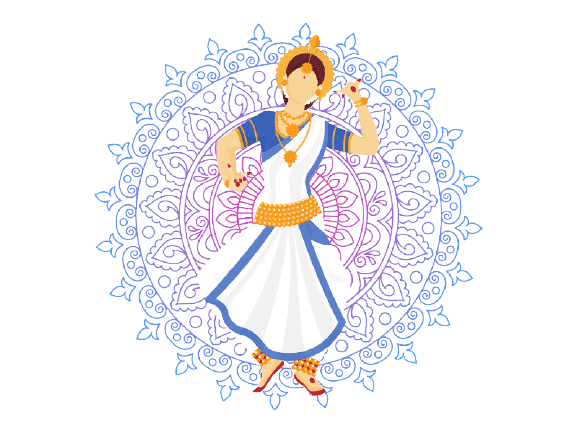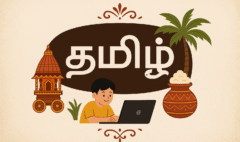An Introduction to Tamilian Traditional Games
An Introduction to Tamilian Traditional Games
Beyond the Screen: Rediscovering the Joy of Tamilian Traditional Games
In an age dominated by smartphones and video games, the simple, boisterous joy of traditional folk games can feel like a nostalgic echo from a bygone era. Yet, in the villages and homes of Tamil Nadu, a rich and vibrant tradition of these games is being kept alive, passed down through generations as a cherished part of the cultural heritage. These Tamil traditional games (தமிழ் பாரம்பரிய விளையாட்டுகள் – Tamil paarambariya vilaiyaattugal) are more than just a way to pass the time. They are ingenious, often requiring no special equipment, and are designed to build physical strength, strategic thinking, social skills, and a deep sense of community. For the student of the Tamil language and culture, exploring these games from Tamil Nadu is a wonderfully fun and interactive way to learn. It is a form of learning Tamil with games that is active, social, and deeply rooted in the traditions of the land. This guide will introduce you to some of the most famous and beloved cultural games of the Tamil people, giving you a glimpse into a world of play that is both ancient and timeless.
Why Traditional Games Matter
These games are a window into the culture’s soul. They reflect a time when entertainment was not a passive act of consumption, but an active act of creation and participation. They teach valuable life skills:
- Physical Fitness: Many games are physically demanding, promoting agility, strength, speed, and endurance.
- Strategic Thinking: Games like Pallanguzhi require sharp mathematical and strategic skills.
- Teamwork and Social Bonding: Many games are played in large groups, teaching children about cooperation, sportsmanship, and social interaction.
* Connection to Nature: The games often use simple, natural materials like stones, shells, and sticks, fostering a connection to the environment.
* Language and Rhythm: Many games are accompanied by special songs, rhymes, or rhythmic counting in Tamil, making them a natural and joyful tool for language acquisition.
Famous Outdoor Games (வெளிப்புற விளையாட்டுகள் – Velippura Vilaiyaattugal)
These are the energetic games played in the open fields and streets.
1. Kabaddi (கபடி): The Game of the Warrior’s Breath
Kabaddi is the most famous and internationally recognized of the Tamil traditional games, and it is the official state sport of Tamil Nadu.
- How to Play: Two teams occupy opposite halves of a field. A single player, the “raider,” from one team runs into the opposing team’s half, chanting the word “Kabaddi” continuously on a single breath. The raider’s goal is to tag as many opponents as possible and return to their own half before taking another breath. The defending team’s goal is to tackle the raider and prevent them from returning.
- Skills and Cultural Value: Kabaddi is a thrilling game that requires immense physical strength, speed, stamina, and strategic thinking. The act of chanting on a single breath (“மூச்சுப் பிடித்து” – moochu-p pidithu – “holding the breath”) is a form of pranayama, linking the game to the ancient arts of yoga and breath control. It is a game that embodies the martial spirit and the importance of teamwork.
2. Kho-Kho (கோ-கோ): The Game of Chasing and Dodging
Another popular and fast-paced chasing game, Kho-Kho is a staple of school playgrounds.
- How to Play: Two teams compete. The chasing team kneels in a line in the middle of the court, with adjacent members facing opposite directions. A single chaser starts, and their goal is to tag a member of the defending team who is running around the court. The chaser can pass on their chasing duty to one of their kneeling teammates by touching them on the back and shouting “Kho!”.
* Skills and Cultural Value: Kho-Kho is a game of incredible agility, speed, and reflexes. It teaches teamwork and quick decision-making. The rhythmic shout of “Kho!” is an integral part of the game’s soundscape.
3. Nondi (நொண்டி): The Game of Hopping
This is the Tamil version of the classic game of Hopscotch.
- How to Play: A grid is drawn on the ground. A player throws a small stone (“சில்லு” – sillu) into the first square, and then hops through the grid on one leg, skipping the square with the stone. They must turn around and hop back, picking up the stone on their way.
* Skills and Cultural Value: Nondi is a wonderful game for developing balance, coordination, and focus. The rhythmic hopping and the simple joy of the game have made it a favorite among children, especially girls, for generations.
4. Gilli-Danda (கிட்டி-புல்): The Ancestor of Cricket
Often called “the poor man’s cricket,” Gilli-Danda is an ancient sport played with two simple wooden sticks.
- How to Play: A small, oval-shaped stick (the “gilli” or “கிட்டி” – kitti) is placed over a small hole in the ground. The player uses a longer stick (the “danda” or “புல்” – pul) to flick the gilli into the air and then strike it as far as possible. The opposing team must try to catch the gilli.
* Skills and Cultural Value: This game requires excellent hand-eye coordination and strength. Many believe it to be an ancient precursor to modern bat-and-ball games like cricket and baseball. It is a testament to the ingenuity of creating a thrilling sport with the simplest of materials.
Famous Indoor Games (உட்புற விளையாட்டுகள் – Utpura Vilaiyaattugal)
These are the quieter, more strategic games played in the shade of a porch or inside the home.
5. Pallanguzhi (பல்லாங்குழி): The Game of Seeds and Strategy
This is an ancient and fascinating board game, a member of the “mancala” family of games found across the world.
- How to Play: The game is played on a wooden board with two rows of seven pits (குழி – kuzhi). Players distribute a set number of seeds, shells, or small stones (காய்கள் – kaaigal) into the pits according to a set of rules. The goal is to capture more seeds than your opponent.
* Skills and Cultural Value: Pallanguzhi is a game of sharp mental arithmetic, strategic planning, and foresight. It was traditionally played by women and was seen as a way to sharpen the mind and teach mathematical skills in a playful way. The rhythmic sound of the shells being moved from pit to pit is a classic sound of a lazy afternoon.
6. Aadu Puli Aattam (ஆடு புலி ஆட்டம்): The Goat and Tiger Game
This is a strategic, two-player hunt game, similar in principle to chess or checkers.
- How to Play: The game is played on a specific, triangular grid drawn on the ground or a board. One player controls three tigers (புலி – puli), and the other player controls fifteen goats (ஆடு – aadu). The tigers’ goal is to “hunt” the goats by jumping over them, while the goats’ goal is to corner the tigers and immobilize them.
* Skills and Cultural Value: This game is a brilliant exercise in strategy and tactical thinking. It teaches the concepts of offensive and defensive play and the idea that a group of smaller, weaker pieces can defeat a stronger opponent through cooperation and strategy.
Conclusion: The Enduring Spirit of Play
The traditional games of the Tamil people are a precious cultural inheritance. They are a joyful reminder of a time when entertainment was social, active, and imaginative. For the language learner, these games offer a unique and wonderfully effective learning environment. When you are playing Kabaddi and chanting “கபடி, கபடி,” or playing Pallanguzhi and counting the seeds in Tamil, you are not studying the language; you are living it. You are connecting with the culture in one of its most fundamental and joyful expressions—the spirit of play. In a world of increasing digital isolation, the act of reviving and playing these games is more important than ever. It is a way to build community, to stay active, and to keep the beautiful traditions, and the beautiful language, of the Tamil people alive and well for generations to come.









